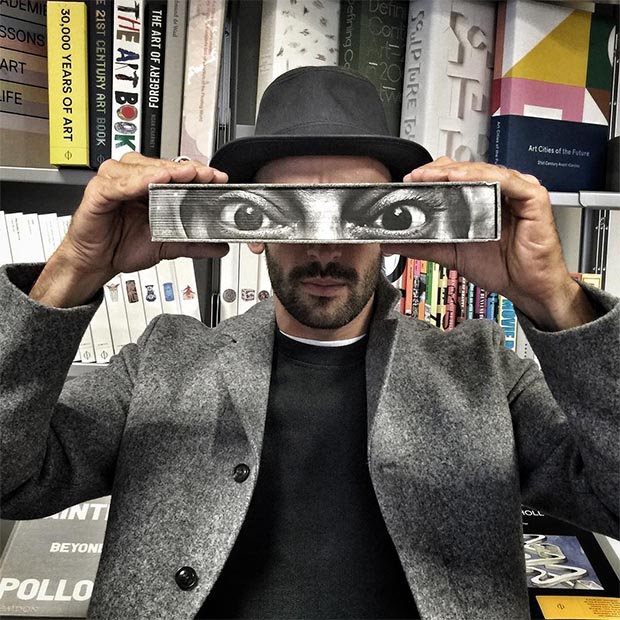
How is JR using his new Phaidon book?
No, not as a pair of glasses. The Parisian artist explains how it's helping him to win over wary subjects
All of the artists we work with take delight in the books that we publish. Yet few have found as practical a use for their Phaidon monograph as JR. The anonymous French artist is best known for photographing equally unknown individuals, and pasting up their black-and-white portraits in streets around the globe. He tends to feature marginalised people, and so his work requires quite a bit of trust on the part of his subjects. Early copies of his new book, it turns out, are helping him establish trust when he approaches putative participants on the steet.
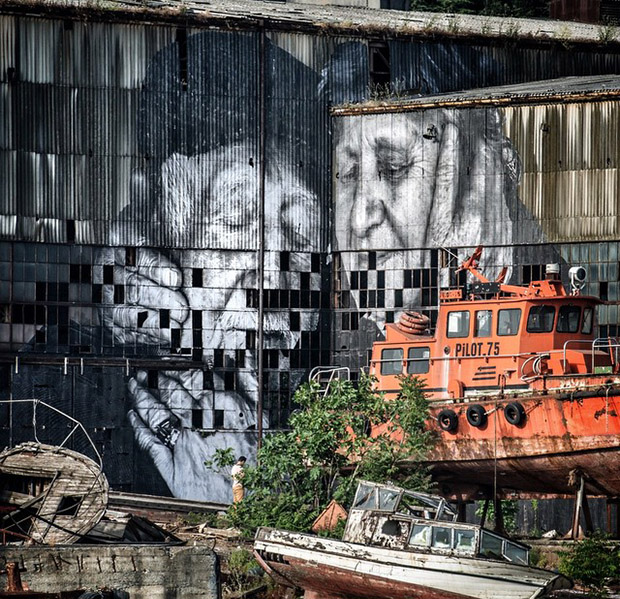
“I’m definitely going to show people this new book,” the artist explained during a visit to our offices last week, “because it represents so many of my projects.” And he has been.
As you may know, the 32-year-old, who sometimes describes himself as a photograffeur, began as a simple tagger, spraying his name on the buildings of Paris, until, by chance, he came across an abandoned camera on the Paris Metro.
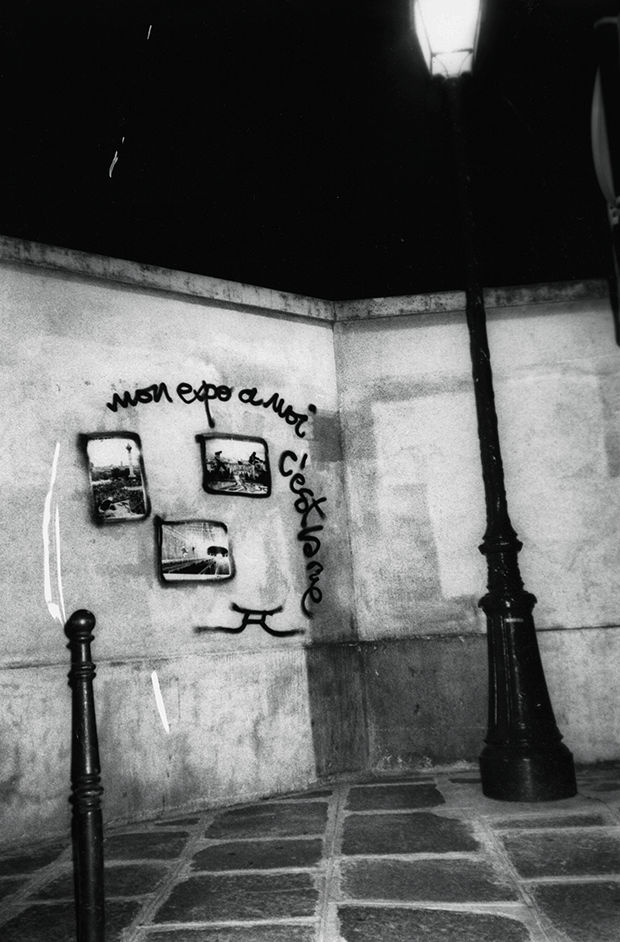
“The graffiti I did was not incredible,” the artist says. “That’s why I was lucky when I find that camera – even though it wasn’t was a great one; you couldn’t change the lens or anything, and it took film, not digital.”
Nevertheless, it enabled JR to turn his attention away from him and his tag and towards his wider community. First he shot portraits of his friends, then images of the poor young kids who made their homes in the Parisian suburbs. He has since moved on to highlighting the hidden dignity in the lives of poor women, immigrants, and elderly people in a huge variety of communities around the world.
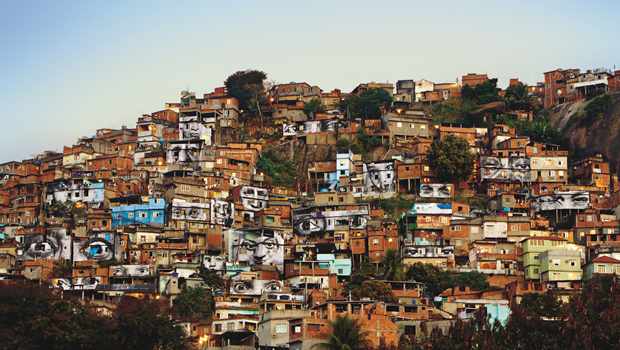
Our new book is the first to capture this wide variety of projects that JR and his collaborators have managed to paste up on the streets of Ramallah, Monrovia, Nairobi, Los Angeles, Shanghai, Jaipur, Havana, Berlin, New York and Paris, as well as conjure up some of the social change that often follows in JR’s wake. The images are striking, yet, as the artist sees it, this brief, physical manifestation is only part of his artistic practice. He is more interested in breaking down barriers and opening up possibilities.
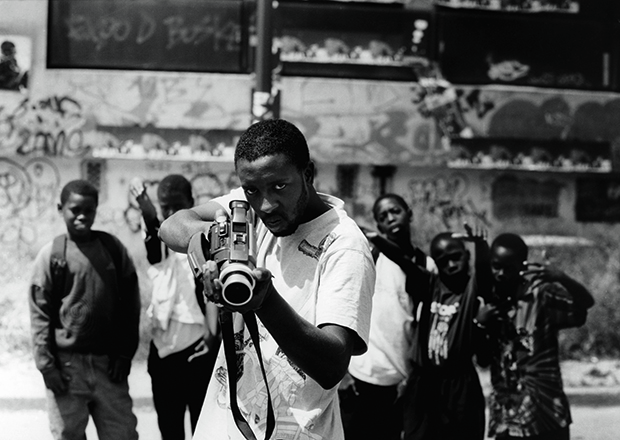
“The social aspect interests me more than the simple creation of images,” he explains. “The art for me is the process. You might think that, when the images are in place, that’s when the art is finished, but actually it’s just the beginning.”
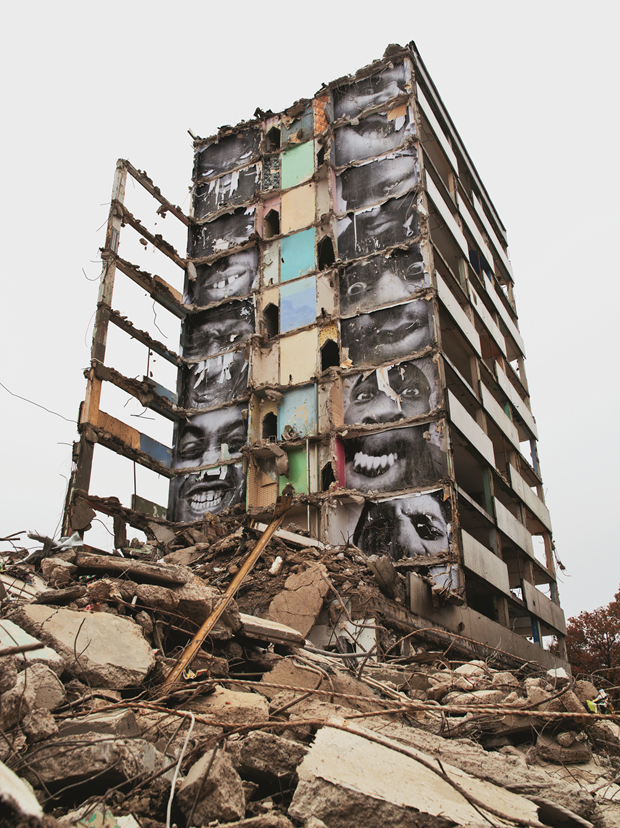
By way of example he describes his projects involving Les Bosquets, a Parisian suburb where JR has been working for over ten years. Initially he photographed the locals, humanising the kind of poor, marginalised kids who were blamed for the city’s 2005 riots. In 2011, he pasted portraits of the neighbourhood’s former inhabitants inside a series of condemned social housing blocks, and photographed the demolition, as cranes tore apart the walls and floors to reveal the faces of the people who had lived there.
{media1}
In 2014, the New York City Ballet invited the artist to create a choreographic work, and the artist created Les Bosquets, based on the suburbs and its unrest. Following a successful run in NYC, JR took the work back to the French suburb that inspired him, staging a performance in the neighbourhood and shooting a film around its production. "And we’re only just beginning to show that film now,” he says. “So it’s hard to say when the art stops.”
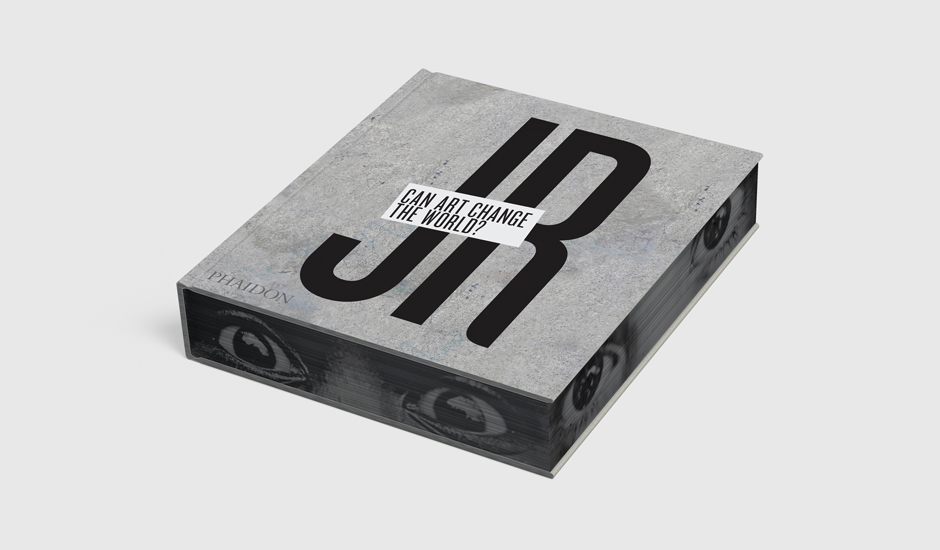
Certainly, if a tall guy in a hat and glasses approaches you, brandishing a copy of this new edition, appropriately entitled JR: Can Art Change The World?, we recommend you pose for him. The photograph might only take an instant, but who's to say how long lasting its effects might be? Find out more about the book here, pre-order your copy here, and check back soon for more on this brilliant new title.